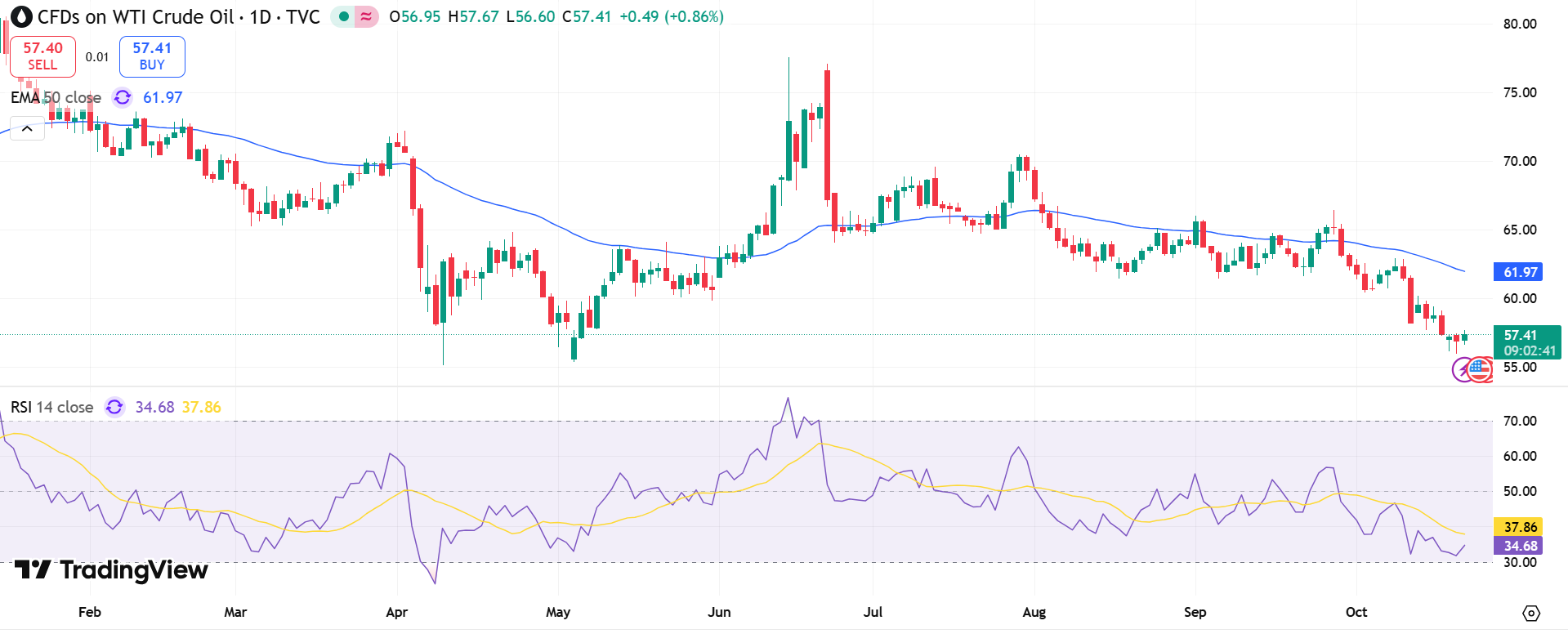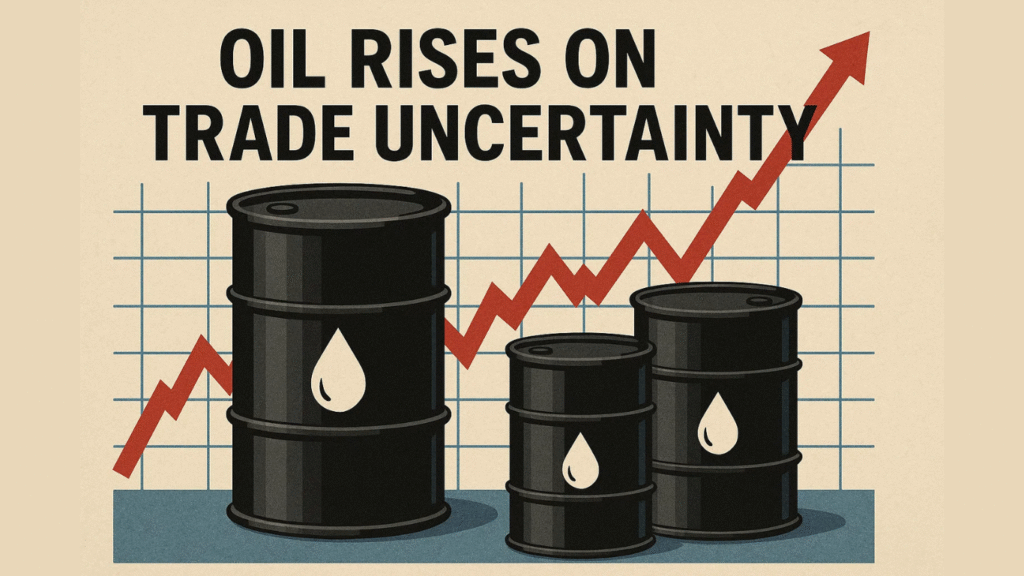Oil prices edged higher on Tuesday, recovering from their lowest levels since early May as traders assessed an oversupplied market and renewed U.S.–China trade tensions.
By 10:19 GMT, Brent crude futures rose 0.84% to $61.52 per barrel, while U.S. West Texas Intermediate (WTI) for November delivery climbed 0.9% to $58.05. The more active December contract gained 52 cents to $57.54.
The rebound followed Monday’s sharp losses amid concerns of slowing demand and rising production. “Speculative bets on lower prices are likely to persist as long as Brent remains below $65,” said Ole Hansen, Head of Commodity Strategy at Saxo Bank.
Both benchmarks have shifted into contango, where near-term prices are cheaper than later deliveries — a market signal that short-term supply exceeds demand.
Key Developments:
- Brent crude: $61.52, up 0.84%
- WTI (November): $58.05, up 0.9%
- OPEC+ continues adding supply despite weak demand signals
OPEC+ Supply and Surplus Outlook
The Organization of the Petroleum Exporting Countries (OPEC+), led by Saudi Arabia and Russia, continues to gradually unwind production cuts, adding more barrels to an already soft market.
Analysts now forecast a crude surplus through 2025, with the International Energy Agency (IEA) projecting a 4 million barrel per day surplus by 2026.
Physical markets reflect this excess: West African crude cargoes are trading at discounts, with unsold shipments piling up, according to Rystad Energy.
However, not all experts believe the glut narrative is fully justified. “If a massive surplus were imminent, futures curves would show super contango—but that’s not the case,” noted Giovanni Staunovo of UBS.
Trade Tensions and Short-Term Risks

Oil’s near-term direction remains tied to macroeconomic developments. A preliminary Reuters poll indicated that U.S. crude inventories likely rose last week, with gasoline and diesel stocks drawing down.
“Distillates just drew, and any geopolitical surprises could trigger short-term counter-rallies, but the prevailing bias is still downward unless OPEC+ slows its output expansion,” said Ole Svalbye of SEB Bank.
The upcoming meeting between U.S. President Donald Trump and Chinese President Xi Jinping in South Korea could prove pivotal. Any breakthrough on tariff disputes or trade terms could restore some demand optimism, offering at least a temporary floor for oil prices.
Until then, traders remain cautious, balancing the risk of excess supply against the fragile global economic recovery — a tension keeping oil’s recovery modest and short-lived for now.


